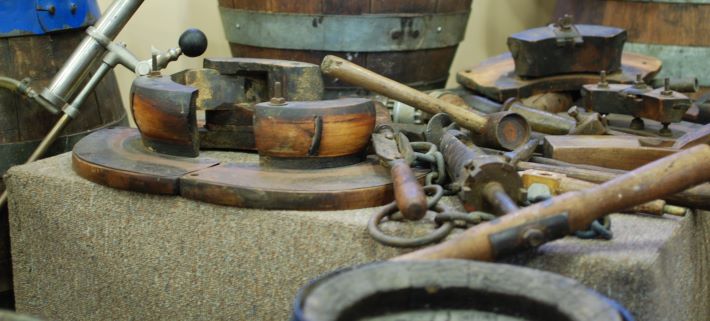
Looking forward to next year’s Innovation of the Year: New Belgium’s Voodoo Ranger Cold Force IPA, a 9.9% Below Fahrenheit Imperial Cold IPA pic.twitter.com/LGBnq4Z2gL
— Nostradouglas ? Veliky (@beercruncher) November 30, 2022
I wish the thread (if you click about you’ll find a few more replies) had grown into a larger conversation, one that discussed what counts as innovation in beer.
I don’t know how Voodoo Ranger Juice Force IPA is produced, that is if the brewers at New Belgium have come up with a new magic process for pumping flavor into beer. But I do know that they were way ahead of the curve a dozen years ago. Which is why then-brewmaster Peter Bouckaert sat in on a panel about dry hopping at the 2010 Craft Brewers Conference. “If you’d asked me 10 years ago if I’d be on a dry-hopping panel I think you all would have been laughing,” he said at the time.
How and how brewers hop beer has changed more than a little bit during the twenty-first century. Does simply using more hops qualify as innovation? How about changing when in the process the hops are added?
And what about the form of hops that brewers use? The latest Hop Queries has a bit about SubZero Hop Kief from Freestyle Hops in New Zealand. SubZero is produced by New River Distilling in North Carolina. I wrote about New River four-plus years ago for Good Beer Hunting, should you be interested.
The process is innovative, but also . . . oh, that name. It speaks to brewers, and they are Freestyle’s customers. In “Cultural Strategy: Using Innovative Ideologies Breakthrough Brands,” the authors write, “A cultural innovation is a brand that delivers an innovative cultural expression.” Freestyle is marketing a better mousetrap — that is signaling that its hops are better than the competition’s — but visit their website to see they are signaling something beyond that.
(The same may be written about several hop growers; making connections is just as important for them as making connections with drinkers is for brewers.)
Back to New Belgium and Voodoo Ranger. The authors of “Cultural Strategy” (published in 2012) present “Fat Tire Beer: Crossing the Cultural Chasm” as a case study in Chapter 11. New Belgium had hired them as consultants in 2003. That was a while ago, when Fat Tire accounted for a ridiculous percentage of sales and Sunshine White and 1554 were second and third.
It is a fascinating chapter that reveals much about the thinking of niche breweries in the aughts, concluding:
“Crossing the cultural chasm requires moving from a marketplace dominated by insider customers, who often hold considerable expertise in the category to what we call follower customers, who simply want an accessible way to tap into a valued cultural expression that the product can credibly represent.”
Fat Tire is still important to New Belgium — here in Colorado many of the trucks that distributors use to deliver beer advertise the beer — but the Voodoo Ranger family does the heavy lifting. Perhaps somebody needs to write a book about re-innovation.
More That Was The Beer Week That Was . . .
After the meme
“I never imagined being the C.E. muthafucking-O owner of a brewery, but here I am. If I can do it, anyone can.”
B minus
“BrewDog is no longer a Certified B Corp. B Lab does not comment on companies that are no longer in the B Corp community. I’m afraid I cannot share any further information.”
Hops
– Use them or lose them. That’s the conclusion of this love letter to English hops.
– A list.
– I’m confused. The headline says two decades ago, but the story states, correctly, that a great (and short-lived) hop shortage began in 2007. The headline contends that Boston Beer “saved craft brewers from a catastrophic hop shortage.” Certainly, Boston Beer deserves credit for offering 20,000 pounds of hops to other small breweries at a very fair price. But the story also links to still another story that reveals Sierra Nevada sold 150,000 pounds “without much fanfare.”